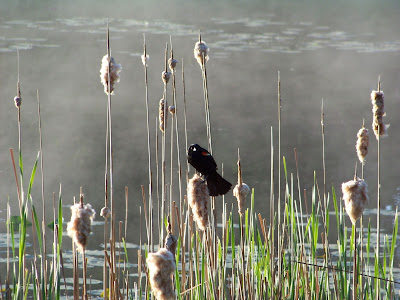The Outdoor Observer: Birds Are Sneaking Back

Red-winded Blackbird at Lake Carmi State Park May 2018 By Rebecca Roy, Conservation Education Coordinator There is great comfort in busy flocks of Chickadees in winter woods. Calling, hopping, curious little flocks of small black and white friends is a rare view of vibrant life in the bleak winter landscape. It seems a miracle they survive the harsh northern New England winter. This winter seemed harsher and longer, and we find greater delight in arrivals of our summer residents, the migratory birds. We mark spring by the first calls of Red-winged Blackbirds here, these are followed by Phoebes and other flycatchers. We watch carefully for thrushes, and the first warblers. Yesterday I saw a Loon in Silver Lake State Park . Birds are sneaking back. Everyone in Vermont is itching to get out on trails as soon as snow is melting in the dooryard. It is mud season now, when trails are most fragile and feet make the greatest impact. There are still wonderful safe plac...
